Top Lists
20 Most Unusual Fruits In The World You Need To Eat
The world is full of fascinating and unique fruits that you should definitely try. Here are the top 20 most unusual fruits
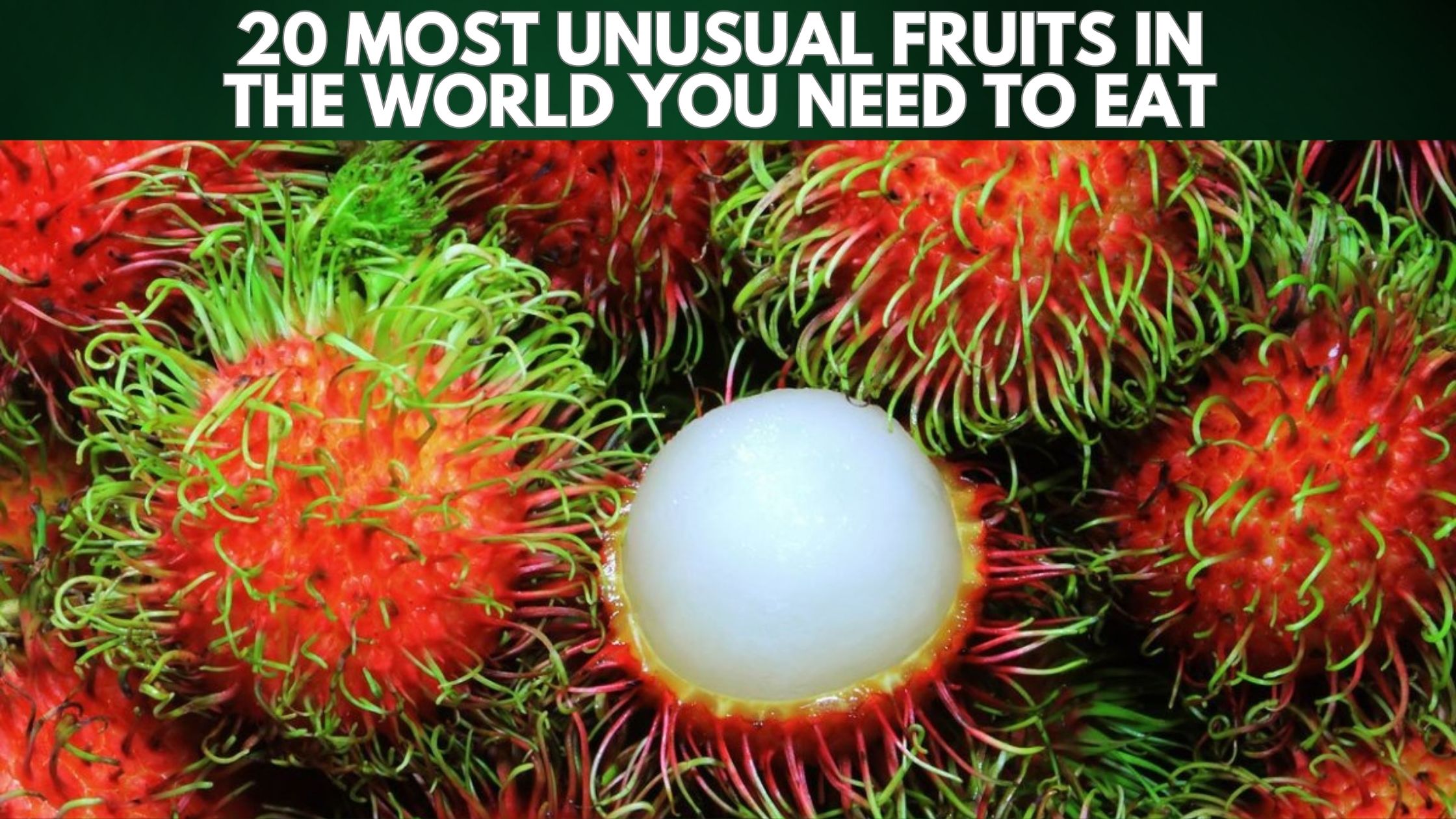
When it comes to fruits, we often think of apples, oranges, and bananas as the usual suspects. However, there is a whole world of extraordinary fruits out there waiting to be explored. These unconventional fruits offer unique flavors, textures, and appearances that will surely amaze your taste buds. If you’re a fruit lover looking to embark on a culinary adventure.
The world is full of fascinating and unique fruits that you should definitely try. Here are the top 20 most unusual fruits that you need to taste:
1. Durian
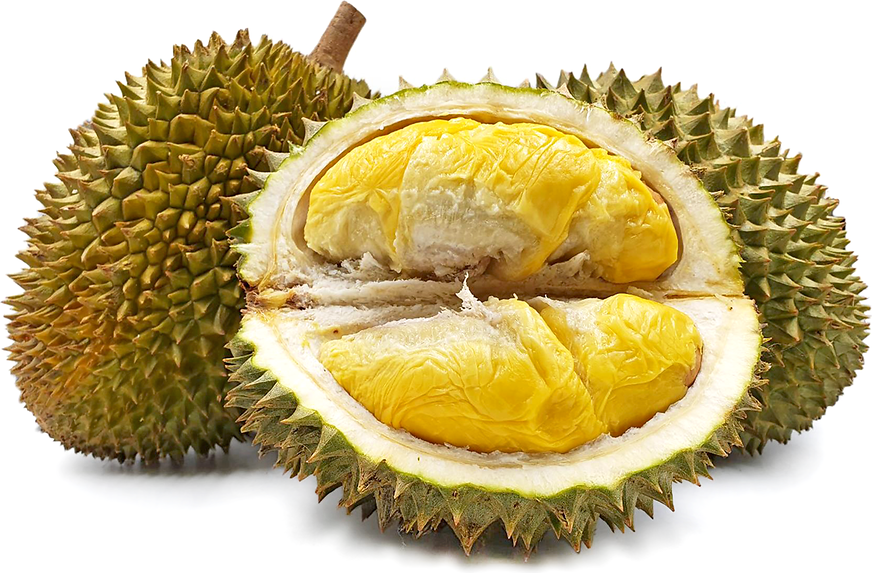
The durian is a fruit known as the “king of fruits” because of its strong smell which some people love and others find repulsive. It has a creamy flesh and a unique flavor that you must try. Durian comes from different types of trees in the Durio genus, with at least nine species having edible fruit. The most common species found in the international market is Durio zibethinus, which is native to Borneo and Sumatra.
The fruit can be large, up to 30 centimeters (12 inches) long and 15 centimeters (6 inches) in diameter, weighing between 1 and 3 kilograms (2 to 7 pounds). It comes in different shapes and colors, ranging from oblong to round, with husks that can be green or brown, and flesh that can be pale yellow to red, depending on the species. The durian flesh is used in various Southeast Asian cuisines to add flavor to both sweet and savory desserts, and the cooked seeds of the fruit are also edible.
2. Dragon Fruit
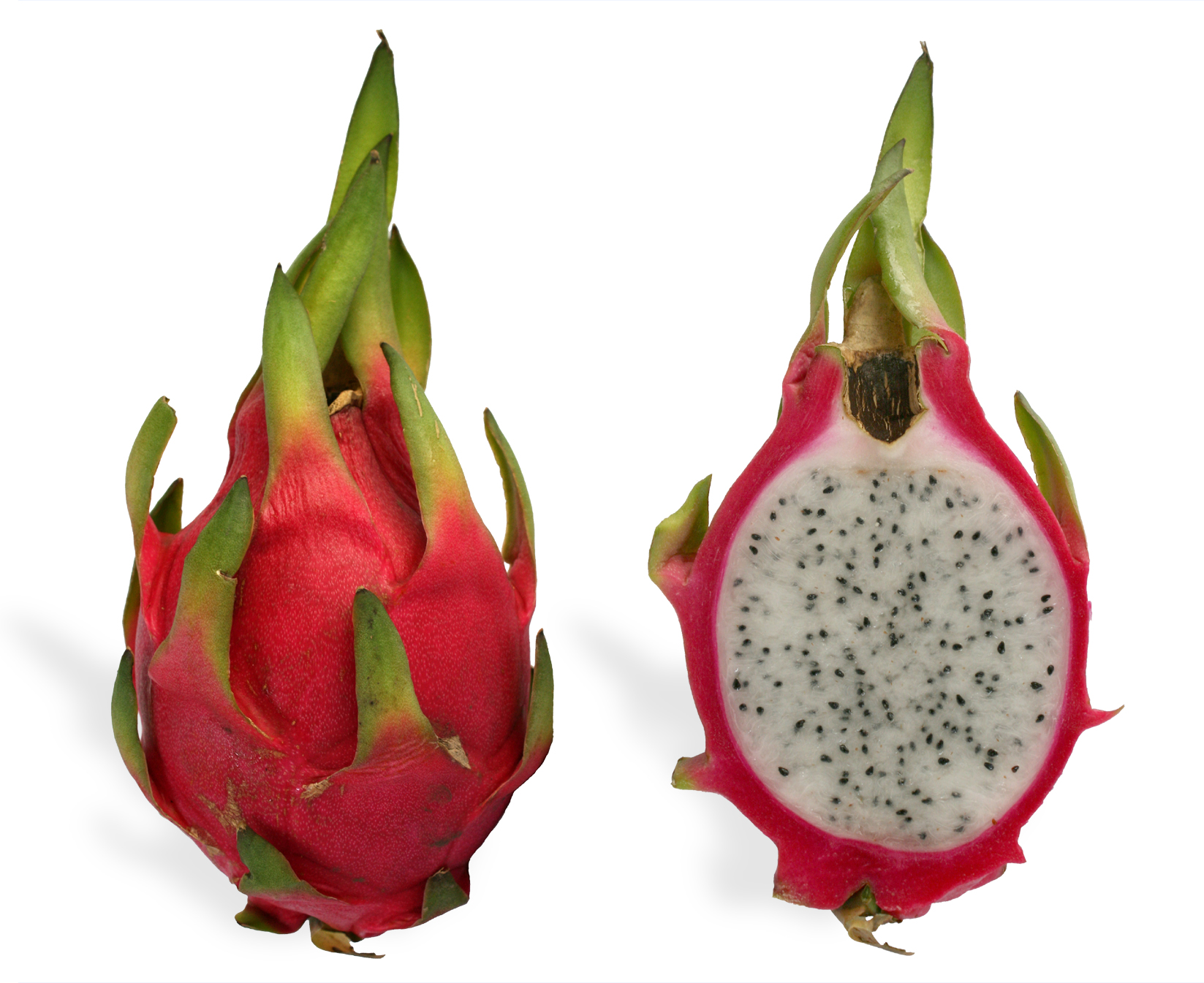
Dragon fruit is a tropical fruit that has a low-calorie count and is rich in fiber and antioxidants. Some people compare its taste to a blend of pear and kiwi. You can enjoy it by slicing and eating it as it is, pairing it with yogurt, or adding it to smoothies or salads. Its striking appearance with pink or yellow skin and white or red flesh dotted with black seeds adds to its appeal. Its mildly sweet taste and refreshing texture make it a delightful choice.
Dragon fruit grows on the Hylocereus cactus, also known as the Honolulu queen, whose flowers bloom exclusively at night. It has various names, including pitaya, pitahaya, and strawberry pear. The two most common types have vibrant red skin with green scales resembling a dragon, which is how it got its name. The most readily available variety has white pulp and black seeds, while a less common variation with red pulp and black seeds also exists. Another variety, known as yellow dragon fruit, has yellow skin and white pulp with black seeds.
Although dragon fruit may seem Peculiar, its flavors are akin to other fruits. It has been described as having a slightly sweet taste, resembling a combination of kiwi and pear.
3. Jackfruit

This giant fruit is the largest tree-borne fruit in the world. Its fibrous texture and sweet flavor are often compared to a combination of pineapple and banana.
The jackfruit is a tree that grows in tropical regions and belongs to the fig, mulberry, and breadfruit family The jackfruit tree produces the largest fruit of all trees, which can weigh up to 55 kg (120 pounds) and measure 90 cm (35 inches) in length and 50 cm (20 inches) in diameter. A mature tree can yield around 200 fruits per year, with some older trees producing up to 500 fruits annually.
The jackfruit itself is a multiple fruits consisting of numerous flowers, and its unripe flesh is consumed. When ripe, the fruit is sweet and often used in desserts. Canned green jackfruit has a mild taste and a texture similar to meat, which has led to its nickname of “vegetable meat.” Jackfruit is commonly found in South and Southeast Asian cuisines, and both ripe and unripe fruits are consumed. It is available worldwide in various forms such as canned, frozen, and prepared meals, including products like noodles and chips.
4. Rambutan

Rambutan is a tropical fruit that looks like hairy lychee. It has a juicy and slightly sweet taste. The fruit has spiky red or yellow skin that is easy to peel, revealing the clear flesh inside. Rambutan comes from a medium-sized tropical tree called Nephelium lappaceum, which belongs to the Sapindaceae family.
It is also the name given to the fruit produced by this tree. Rambutan is originally from Southeast Asia and is closely related to other edible tropical fruits such as lychee, longan, pulasan, and guinea.
5. Horned Melon

The African horned cucumber, also known as the horned melon or kiwano, is a vine that produces spiky fruits with orange skin and lime-green, jelly-like flesh. It is found in Southern Africa and is a traditional food source in the region, providing water during the dry season. The fruit’s taste has been described as a mix of banana and passionfruit, and it can be eaten at any stage of ripening. The peel of the fruit is rich in vitamin C and dietary fiber.
6. Mangosteen
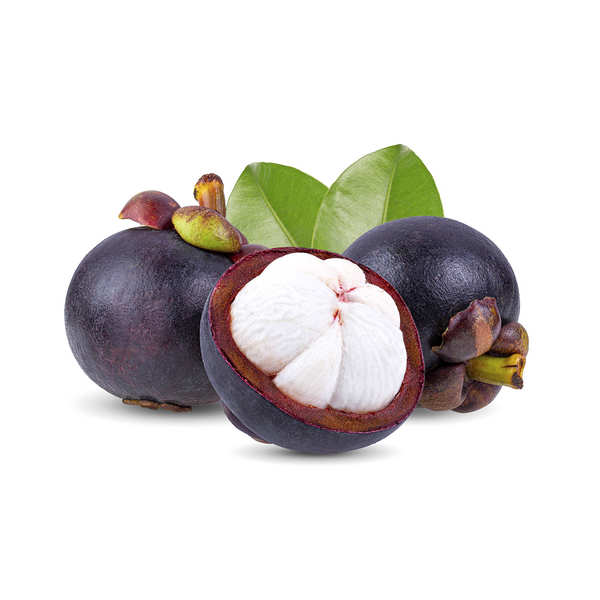
Mangosteen is a fruit with tough purple skin and soft, juicy white flesh. It has a unique taste that combines sweetness and tanginess. The tree that produces mangosteen is a tropical evergreen, found in Southeast Asia, southwest India, and other tropical areas like Colombia and Puerto Rico.
The fruit itself is sweet, tangy, and juicy, with small vesicles filled with liquid. The rind of the fruit is deep reddish-purple and cannot be eaten. The mangosteen belongs to the Garcinia genus, which includes other lesser-known fruit-bearing species like the button mangosteen and the charichuelo.
7. Australian Finger Lime
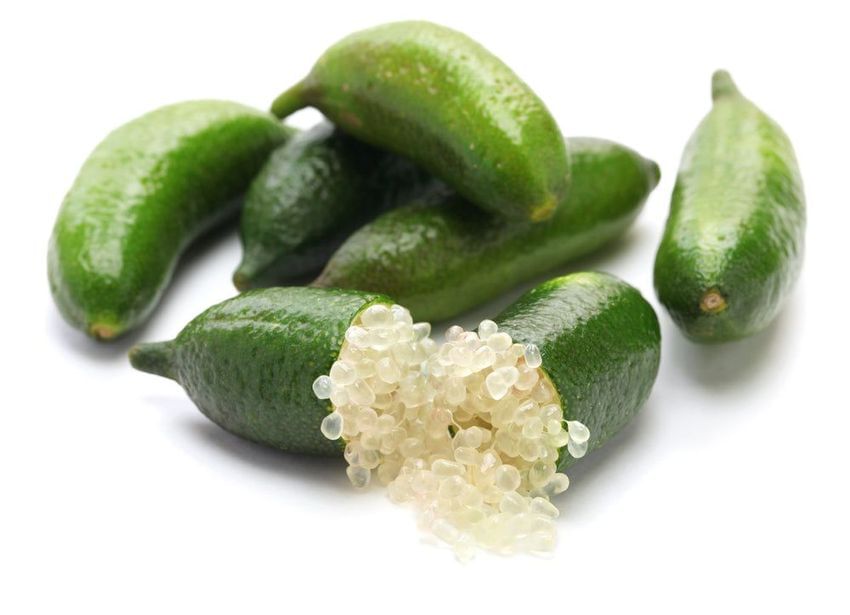
The Australian finger lime or caviar lime, also known as Citrus australasica, is a thorny shrub or small tree that grows in lowland subtropical rainforests in Queensland and New South Wales, Australia. The plant produces edible fruits that are currently being developed for commercial sale.
8. Feijoa
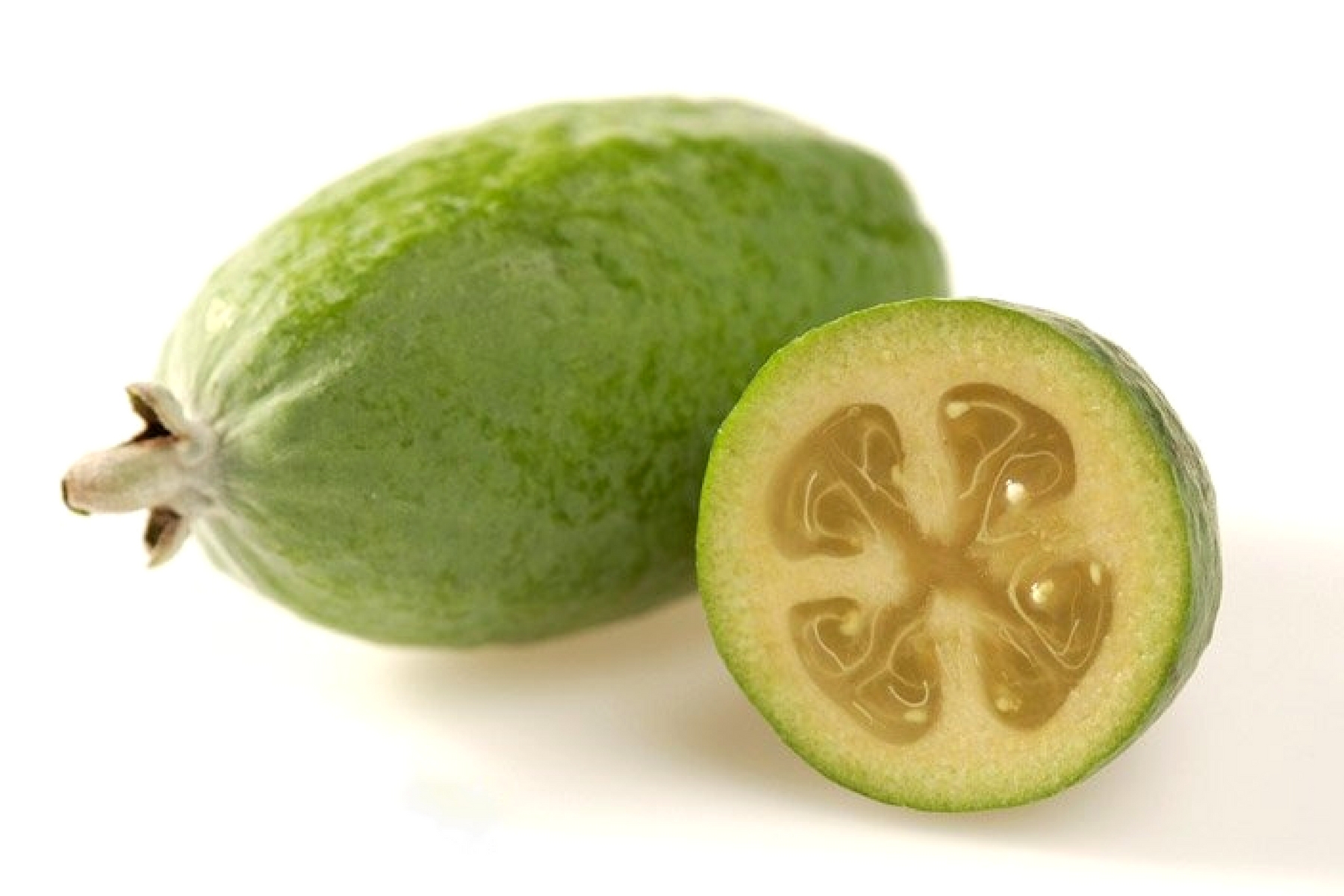
Feijoa sellowiana, also known as Acca sellowiana, is a flowering plant in the Myrtle family. It is native to southern Brazil, eastern Paraguay, Uruguay, northern Argentina, and Colombia. Feijoa is commonly found in gardens in New Zealand. It is grown for its fruit and as an ornamental tree. Some common names for feijoa are feijoa, pineapple guava, and guava steen, although it is not a true guava. It is an evergreen shrub or small tree that can reach a height of 1–7 meters (3.3–23.0 feet).
9. Physalis
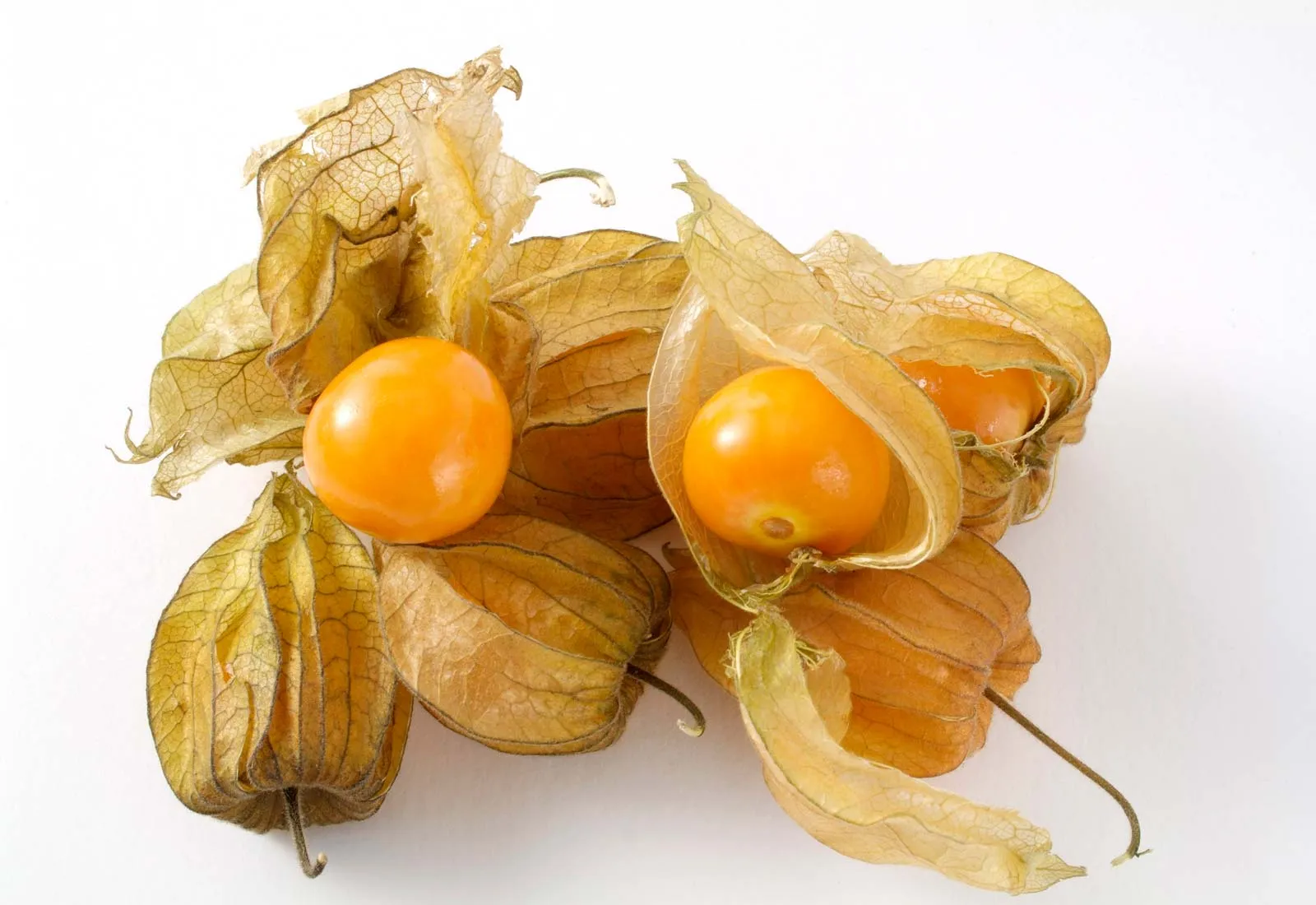
Physalis is a group of flowering plants native to the Americas and Australasia. They have papery husks that surround the fruit, which can be eaten by many species. Physalis fruits are similar to firm tomatoes in texture and have a sweet and tangy grape-like flavor.
10. Cupuacu
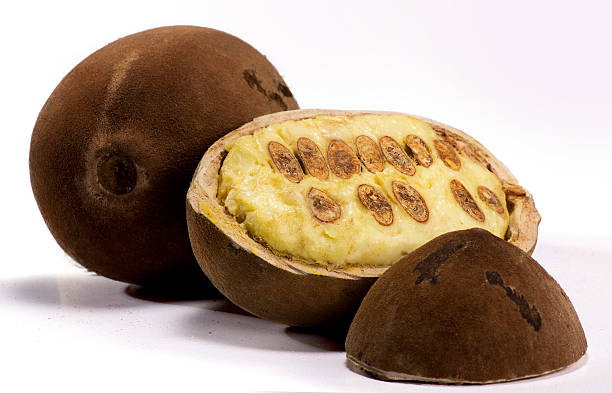
Cupuaçu, also known as Theobroma grandiflorum, is a tropical rainforest tree similar to cacao. It grows naturally in the Amazon basin and is commonly found in the jungles of northern Brazil, as well as Colombia, Bolivia, and Peru. The fruit’s pulp is widely consumed in Central and South America, particularly in the northern states of Brazil. It is used to make various products like ice creams, snack bars, and more.
11. Buddha’s Hand
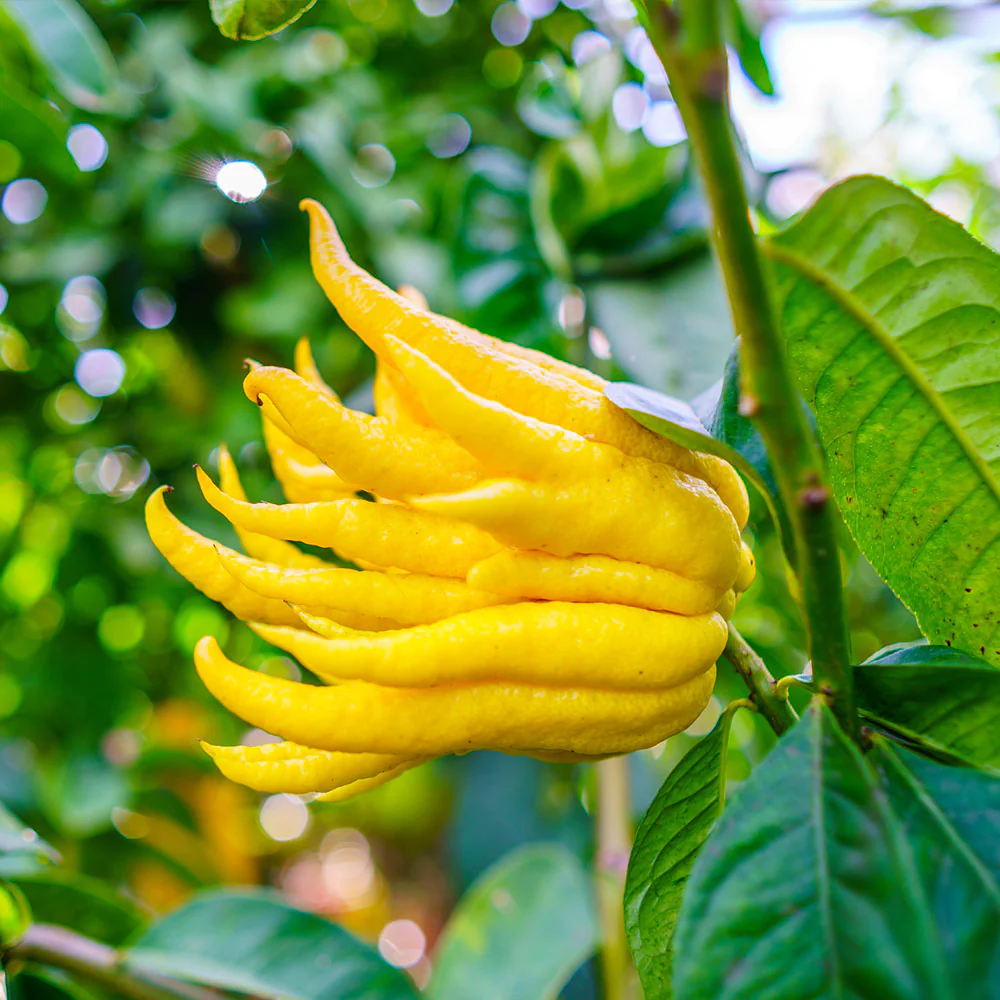
This citrus fruit looks like a bunch of yellow fingers reaching out. It has a strong lemon fragrance and is mainly used for its zest and aromatic oils.
The fingered citron, also known as Buddha’s hand, is a unique type of citron with fruit that has finger-like sections resembling representations of the Buddha. It is called Buddha’s hand in various languages, including English, Chinese, Japanese, Korean, Vietnamese, and French.
There are different types of this citron variety, ranging from “open-hand” with spread-out segments to “closed-hand” with fingers held together. Some fruits have half-fingers, where the base is joined and the top is fingered. This citron is believed to have originated in South or East Asia, possibly northeastern India or China, which is where most domesticated citrus fruits come from.
12. Jabuticaba

Jabuticaba is a fruit native to Brazil that grows directly on the tree trunk. It has a thick skin and a sweet taste similar to grapes, and it is best enjoyed fresh. The fruit can be eaten raw or used to make jellies, jams, juice, or wine.
13. Starfruit

Starfruit, also known as carambola, is a tropical fruit with a unique star shape when sliced. It has yellow skin and a crispy texture, offering a refreshing flavor that combines sweetness and sourness. The fruit comes from the Averrhoa carambola tree, native to Southeast Asia. It has ridges running down its sides, resembling a star when cut. The entire fruit is edible and can be enjoyed raw or used in various dishes like relishes, preserves, garnishes, and juices. Starfruit is popularly consumed in Southeast Asia, South Asia, the South Pacific, Micronesia, parts of East Asia, the United States, Latin America, and the Caribbean.
14. Water Apple
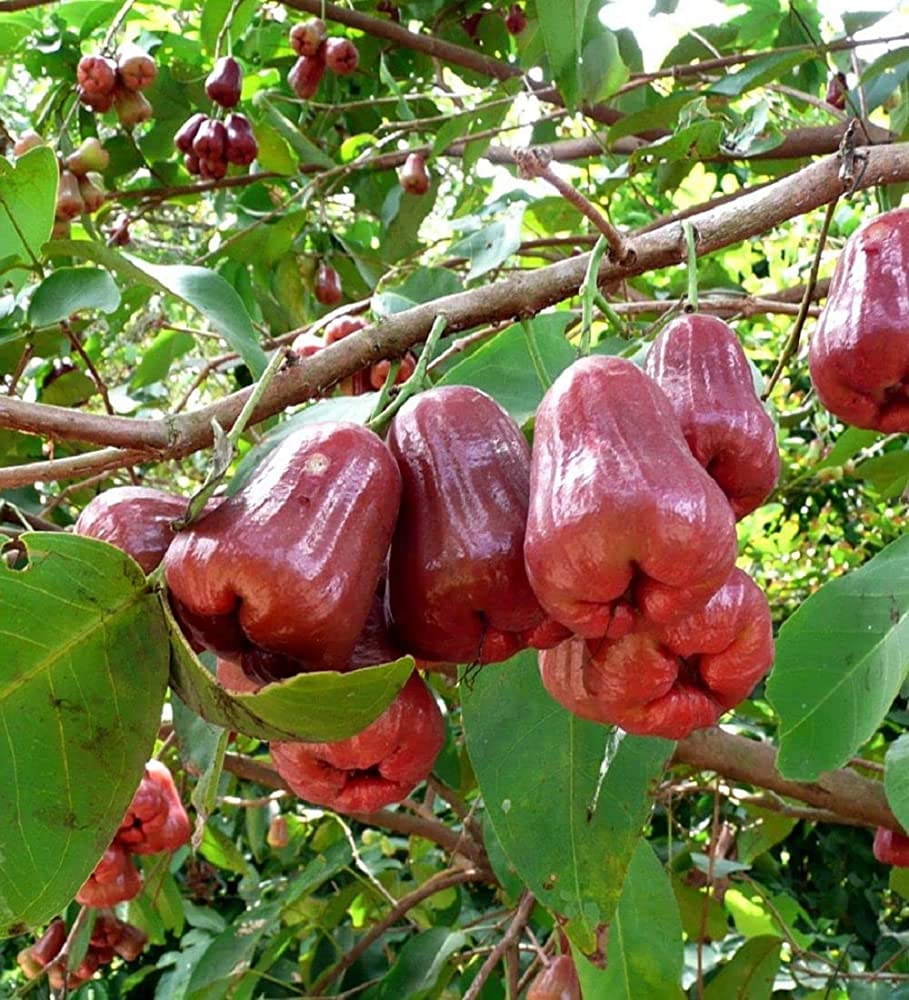
Water Apple, scientifically called Syzygium samarangense, is a flowering plant from the Myrtaceae family. It is commonly found in the Greater Sunda Islands, the Malay Peninsula, and the Andaman and Nicobar Islands. This plant was introduced to different regions a while back and is now widely cultivated in tropical areas. In English, it goes by multiple names such as wax apple, Java apple, Semarang rose apple, and wax jambu.
15. Ackee
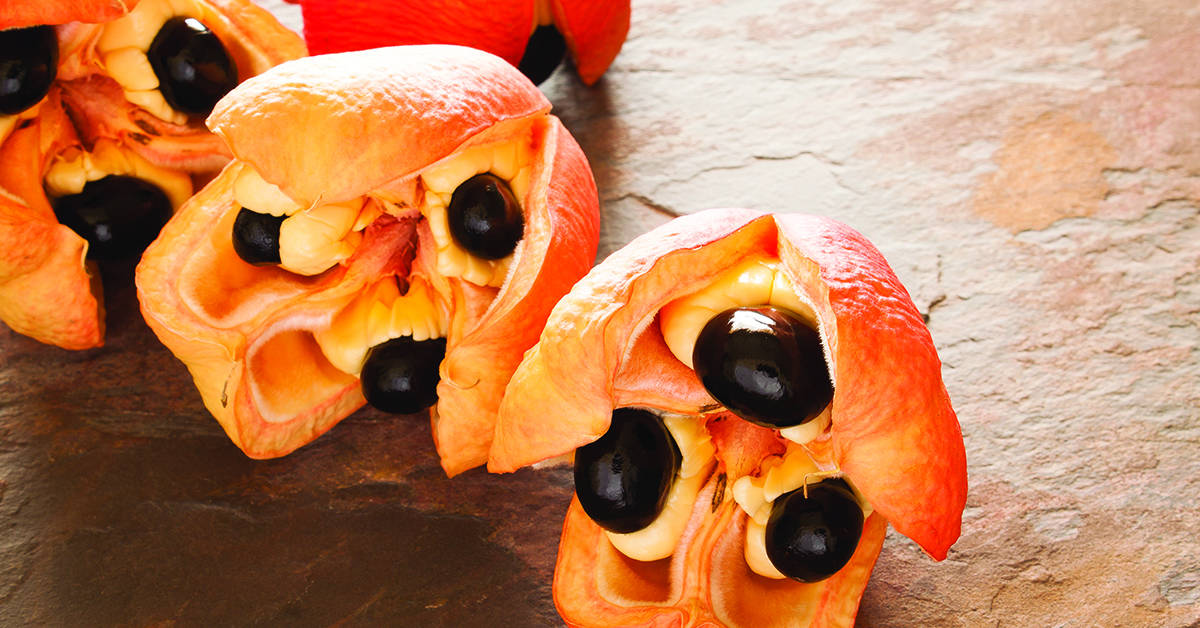
Ackee is the national fruit of Jamaica and comes from West Africa. It has bright red skin and a unique buttery or nutty taste. It’s also known as ankle, achee, akee, ackee apple, or ayee. The scientific name is Blighia sapida and it belongs to the soapberry family along with lychee and longan. It was named after Captain William Bligh, who brought the fruit to England in 1793. The English name comes from the West African Akan term “akye fufo.”
16. Korean Melon

The Korean melon is a small yellow melon with white stripes and white flesh. It has edible white seeds and tastes like a combination of honeydew and cucumber, with a crisp texture similar to cucumber. It is grown in East Asia and is believed to have originated in eastern India before spreading to China, Korea, and Japan. The melon is less sweet than Western varieties and contains about 90% water. It is often eaten fresh, and its thin rind and small seeds make it possible to eat the whole fruit.
17. Sour Plum
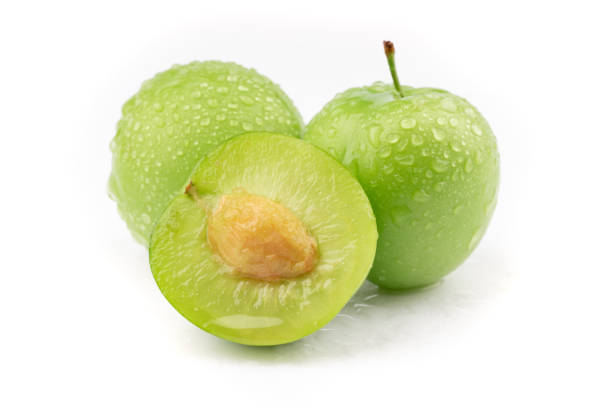
Sour plums are a type of summer-ripening plums that we enjoy, but they are picked in the spring when they are still sour and green. They are a popular snack in the Middle East, where people like to eat them with salt.
18. Passion Fruit
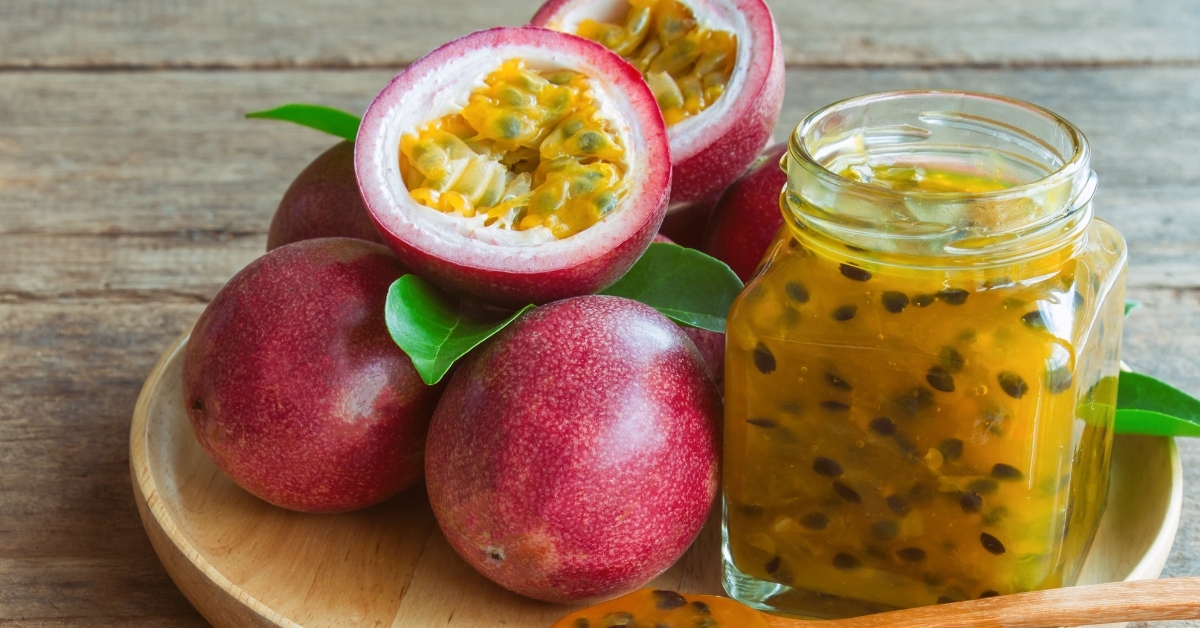
Small, golf-ball-sized red or yellow fruit with hard skin and tart, juicy seeds that you can scoop out with a spoon. Passion fruit is native to South America, but it’s now grown around the world.
Where to find it: Well-stocked grocery stores and specialty food stores. Here in the Bay Area, Mollie Stones Market sells it.
19. Mulberries
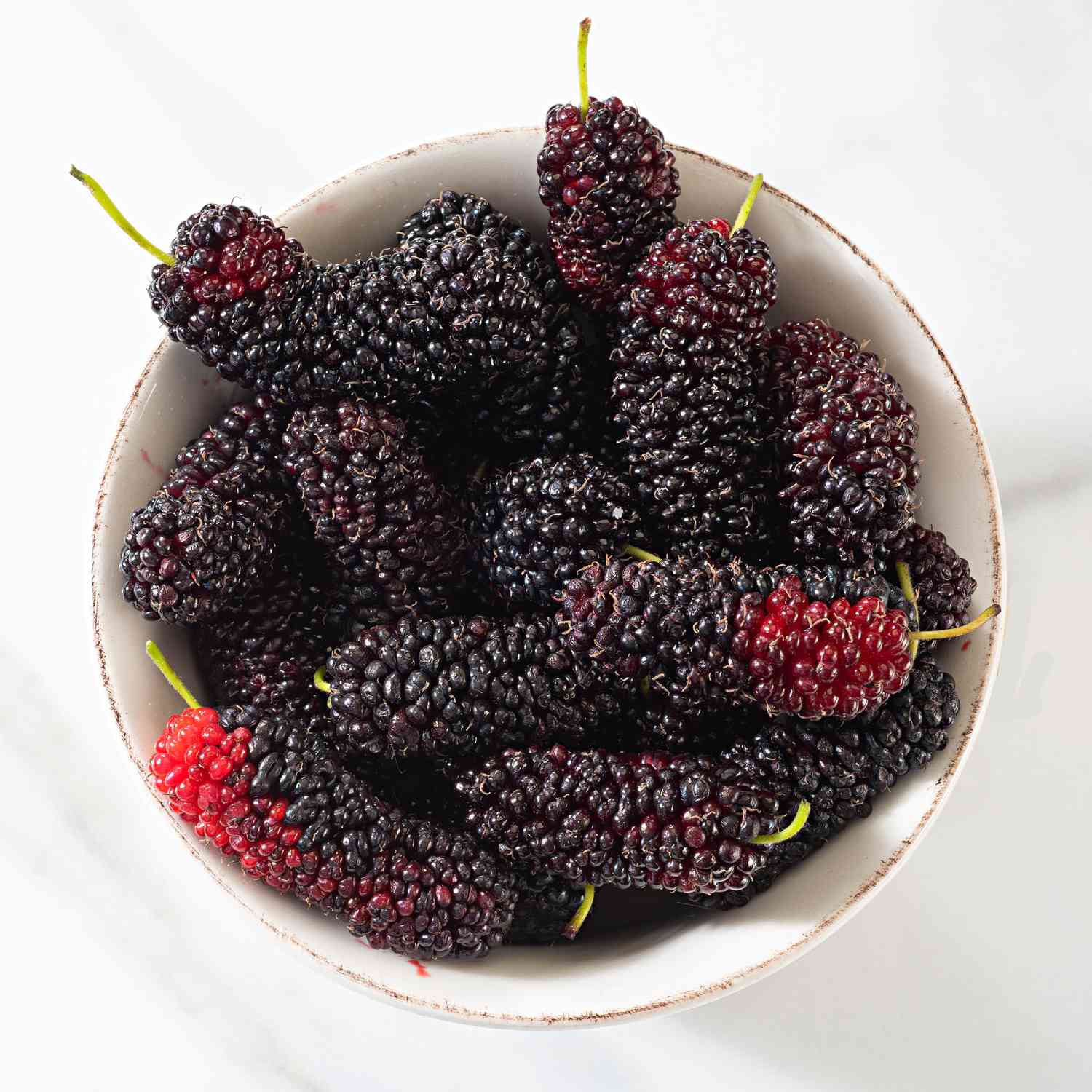
The elongated red berry grows on a small bushy tree and is originally from China. It used to be cultivated as food for silkworm larvae.
20. Cherimoya
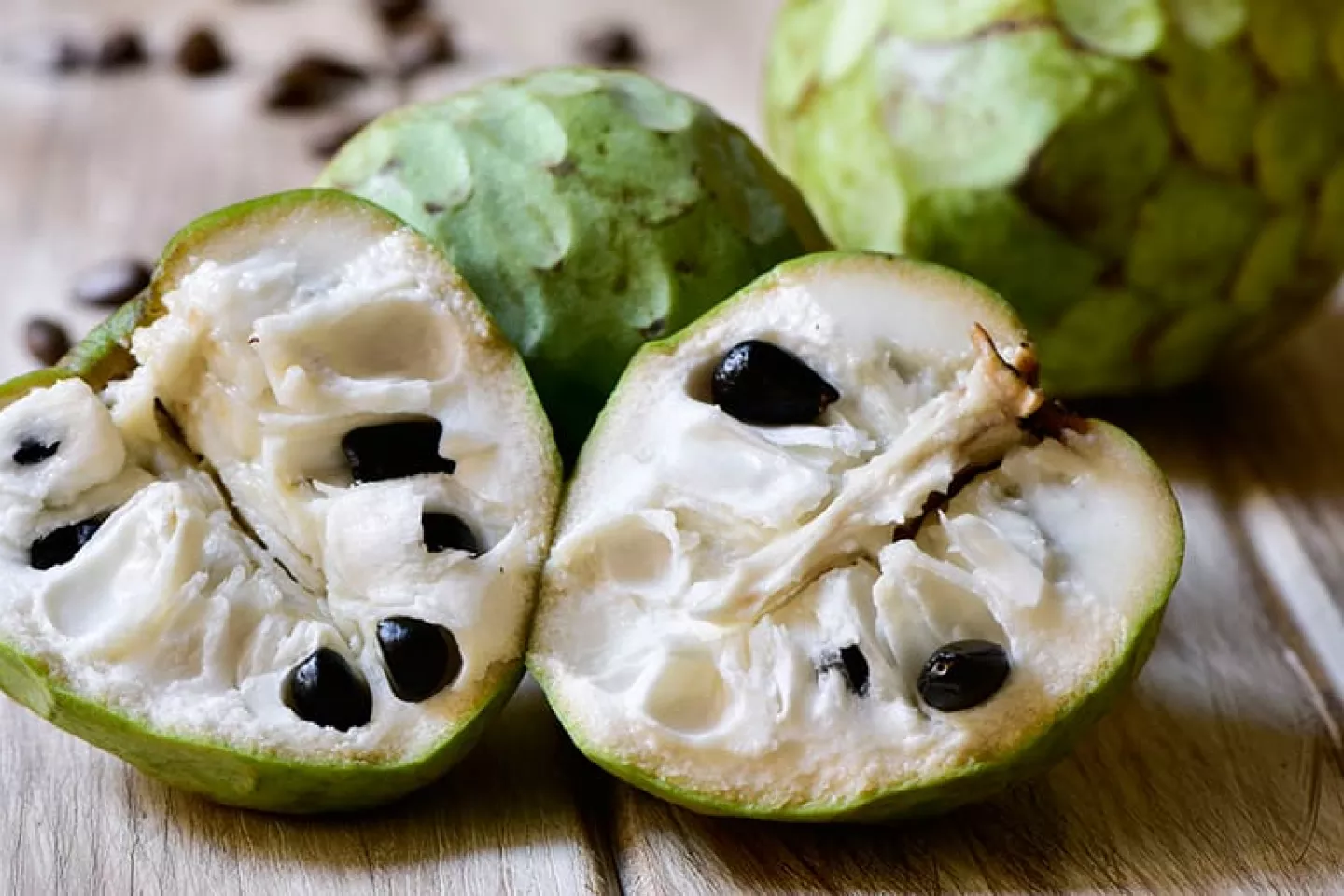
The cherimoya is a delicious fruit plant that belongs to the Annona genus, part of the Annonaceae family. It is also known as chirimoya or cherimoya, as named by the Inca people. This plant is closely related to the sweetsop and soursop fruits.
In conclusion: These unusual fruits offer a variety of flavors, textures, and appearances that are sure to intrigue your taste buds. So, don’t hesitate to explore the world of extraordinary fruits and expand your culinary horizons!
